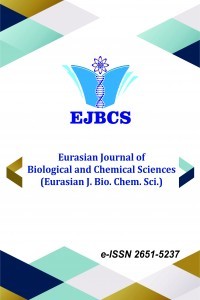High Performance Liquid Chromatography with Size Exclusion Column (HPLC-SEC) Method for Identifying the Major Whey Proteins of Whey Protein Products
High Performance Liquid Chromatography with Size Exclusion Column (HPLC-SEC) Method for Identifying the Major Whey Proteins of Whey Protein Products
Whey Proteins, HPLC-SEC, β-lactoglobulin, α-lactalbumin Immunoglobulin G,
___
- Anonymous. 2001. Reference Manual for US Whey Products. US Dairy Export Council, Arlington, VA, USA.
- Bicah, P, Blanc B 1982. Milk protein analysis – a high-performance chromatography study. Milchwisenschaft. 37: 592-593.
- Bouaouina H, Desrumaux A, Loisel C, Legrand J 2006. Functional properties of whey proteins as affected by dynamic high-pressure treatment. International Dairy Journal. 16: 275-284.
- Clark PJ 2005. Concentrating proteins from milk and meat. Food Technology. 59: 80-83.
- De Wit JN 1998. Nutritional and functional characteristics of whey proteins in food products. Journal of Dairy Science. 81: 597-608.
- Diosady LL, Bergen I, Harwalkar VR 1980. High performance liquid chromatography of whey proteins. Milchwissenschaft. 35: 671-674.
- Downes N, Silcock P 2014. HPLC method development for quantification of proteins from UF pilot scale-up. Seperex Nutritionals Ltd., Dunedin, New Zealand Internal Report. 4 pp.
- Elgar DF, Norris CS, Ayers JS, Oritchard M, Otter DE, Palmano KP 2000. Simultaneous separation and quantitation of the major bovine whey proteins including proteose peptone and caseinomacropeptide by reversed-phase high-performance liquid chromatography on polystyrene-divinylbenzene. Journal of Chromatography A. 878: 183-196.
- El-Sayed MMH, Chase HA 2010. Purification of the two major proteins from whey concentrate using a cation-exchange selective adsorption process. Biotechnological Progress. 26: 192-199.
- Garcia MC, Marina ML, Torre M 1998. Ultrarapid detection of bovine whey proteins in powdered soybean milk by perfusion reversed-phase high-performance liquid chromatography. Journal of Chromatography A. 822: 225-232.
- Geberding SJ, Byers CH 1998. Preparative ion-exchange chromatography of proteins from dairy whey. Journal of Chromatography A. 808: 141-151.
- Gupta BB 1983. Determination of native and denatured milk proteins by high-performance size exclusion chromatography. Journal of Chromatography. 282: 463-475.
- Holland PT, Cargill A, Selwood AI, Arnold K, Krammer JL, Pearce KN 2011. Determination of soluble immunoglobulin G in bovine colostrum products by protein G affinity chromatography – Turbidity correction and method validation. Journal of Agricultural and Food Chemistry. 59: 5248-5256.
- Huffman LM, Harper JW 1999. Maximizing the value of milk through separation technologies. Journal of Dairy Science. 82: 2238-2244.
- Kang DY, Moon JM, Lee S 2011. Comparison of size-exclusion chromatography and flow field-flow fractionation for separation of whey proteins. Bulletin of the Korean Chemical Society. 32: 1315.
- Kelly PM, Kelly J, Mehra R, Oldfield DJ, Raggett E, O’Kennedy BT 2000. Implementation of integrated membrane processes for pilot scale development of fractionated milk components. Lait. 80: 139-153.
- Kinghorn NM, Norris CS, Paterson GR, Otter DE 1995. Comparison of capillary electrophoresis with traditional methods to analyse bovine whey proteins. Journal of Chromatography A. 700: 111-123.
- Liang M, Chen V YT, Chen HL, Chen W 2006. A simple and direct isolation of whey components from raw milk by gel filtration chromatography and structural characterization by Fourier transform Raman spectroscopy. Talanta. 69: 1269-1277.
- Madureira AR, Pereira CI, Gomes AMP, Pintado ME, Malcata FX 2007. Bovine whey proteins – Overview on their main biological properties. Food Research International. 40: 1197-1211.
- Ostertag F, Schmidt CM, Berensmeier S, Hinrichs J 2021. Development and validation of an RP-HPLC DAD method for the simultaneous quantification of minor and major whey proteins. Food Chemistry. 342: 18176 (8 pp.).
- Pires AF, Marnotes NG, Rubio OD, Garcia AC, Pereira CD 2021. Dairy by-products: A review on the valorization of whey and second cheese whey. Foods. 10: 1067 (24 pp.).
- Saboya LV, Maubois JL 2000. Current development of microfiltration technology in the dairy industry. Lait. 80: 541-553. Smithers GW 2008. Review - Whey and whey proteins – from ‘gutter-to-gold’. International Dairy Journal. 18: 695-704.
- Tetra Pak. 2015. Dairy Processing Handbook. Tetra Pak Processing Systems AB, Lund, Sweden.480 pp.
- Zadow JG 1994. Utilization of milk components: Whey. In Modern Dairy Technology, Advances in Milk Processing, Vol. 1 (2nd Edition) (R.K. Robinson, ed.). Chapman and Hall, London, UK. pp. 313-373.
- Yayın Aralığı: Yılda 2 Sayı
- Başlangıç: 2018
- Yayıncı: Muhammet DOĞAN
Electrosprayed WPC/PEO Mats Coated to Fresh Figs
Murad GULİYEV, Emine ŞEN, Boran ÇALIŞKAN, Gamze TETİK, Enver TARHAN, Özgür TARHAN
Moringa oleifera bitki yaprağının mineral ve yağ asidi bileşenlerinin belirlenmesi
CT Imaging, Macroanatomical and Morphometric Analysis of Os penis in Brown Bear (Ursus arctos)
Semine DALGA, Gülseren KIRBAŞ DOĞAN, Yalçın AKBULUT, Türkhun ÇETİN, Volkan KIZILGÖZ
Malatya İli Sucul Böcek (Coleoptera) Faunası Bilgisine Katkılar
Yavuz MAHMUT, Abdul-hameed M. HAMOODY, Rushdi Sabah ABDULQADER
